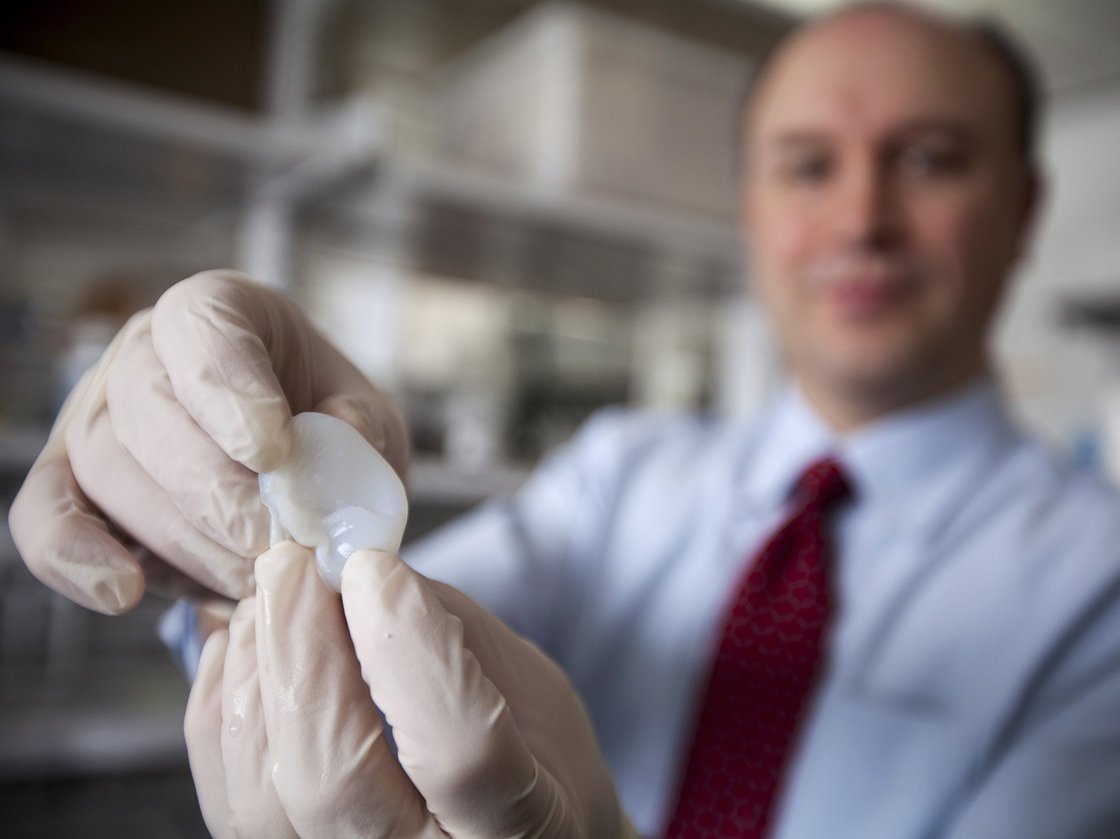3D bio-printing market worth $1.82 bn By 2022
November 27, 2015 | Friday | Features | By BioSpectrum Bureau
3D bio-printing market worth $1.82 bn By 2022
(Photo Courtesy: www.bioprintingworld.com)
The global 3D bio-printing market size was valued at USD 487.0 million in 2014 and is expected to witness significant growth and attention from healthcare researchers over the forecast period due to, the rising incidences of chronic illnesses leading to organ and tissue transplants coupled with increasing life span of individuals and limited number of organ donors.
According to market research and consulting firm Grand View Research, advancement in technology and incorporation of IT within the healthcare industry, rising geriatric population base and improving R&D efforts for the sector are likely to serve as high impact rendering drivers for this market.
As of 2015, numerous universities and research institutes have begun analyzing the prospects of bio-printed implants, organs and tissue reconstructions.
For instance, the Heriot-Watt University of Scotland created a 3D bio-printer capable of printing pluripotent stem cell cultures that may be applied for drug testing.
Another example portraying the substantial development is the recently accomplished thyroid gland transplantation in mice by 3D Bio, for treating hypothyroidism.
If results are favorable, the company would start testing it for human use in the next two years.
Technologies used in the 3D bio-printing industry include magnetic levitation, inkjet based, syringe based, and laser based 3D bio-printing. Magnetic levitation along with syringe based 3D bio-printers held the largest share in 2014 whereas laser technology is expected to witness the fastest growth. Also, syringe based technology is anticipated to gain higher adaptation over the next seven years.
The next generation magnetic levitation 3D bio-printers are expected to solve more that 80% of the current failures encountered along with enhanced speed and precision.
Magnetic levitation printers find application in toxicity screening, vascular smooth muscle printing, human cell generation and their drug response management.
BioAssay is a company dealing with manufacturing of tissue-like structure which makes use of these printers on a large scale to benefit from magnetic levitation technology.
Key applications analyzed in the study include dental, medical, biosensors, bioinks, food and animal product bio-printing and consumer/personal product testing.
The medical segment is expected to dominate the market with over 30.0% share in 2022 and cover the regeneration of organs, tissues, implants and prosthetics along with medical pill production.
Medical pills are the latest development in the 3D bio-printing market and are expected to witness lucrative growth over the forecast period.
This growth may be attributed to the increasing need of medicines and the advantage of fast and cost efficient production of biodrugs using 3D bio-printing.
According to various industry experts, the pharmaceutical industry is expected to grow multi-folds, thereby increasing the volume of medical pill production.
Aprecia Pharmaceuticals received the first ever USFDA approval for 3D printing of their drug Spritam in August 2015.
The drug would have therapeutic action in treatment of epileptic patients.
North America is anticipated to dominate the global market in terms of revenue over the forecast period.
It held over 35.0% of the market share as of 2014 is expected to grow at CAGR of over 10.0%.
Presence of a huge geriatric and chronically ill population within the region coupled with refined healthcare infrastructure and reasonably higher patient disposable income levels are the key drivers of this market.
Furthermore, extensive research activities currently conducted within the region are expected to be vital growth factor over the forecast period.
The Wake Forest University of North Carolina presented their research for development of customized medication at the American Heart Association Scientific Sessions (AHASS) in November 2015.
The pills would be designed according to the biological profile of each patient which includes, organ function capacity, weight, gender and race.
Asia Pacific is expected to witness lucrative growth owing to their pioneering presence in development of healthcare IT and quick adaption of technological advancements.
Furthermore, rising awareness level, increasing foreign investments within the region for the purpose of research and supportive government initiatives is expected to propel this development over the next seven years.
Key players operating in the 3D bio-printing industry include Organovo Holding, Cyfuse Biomedical, BioBots, Luxexcel Group BV, TeVido BioDevices, Aspect Biosystems, 3Dynamics Systems, Stratasys, Voxeljet, Oceanz, Materialise NV, Envision TEC, Bio3D Technologies, Solidscape and others.
Most of the market players have formed tie-ups with research institutes and universities that work on grafting and organ regeneration technologies.
Also, the players are scheduling various exhibitions and seminars in order to raise awareness regarding the industry globally.










